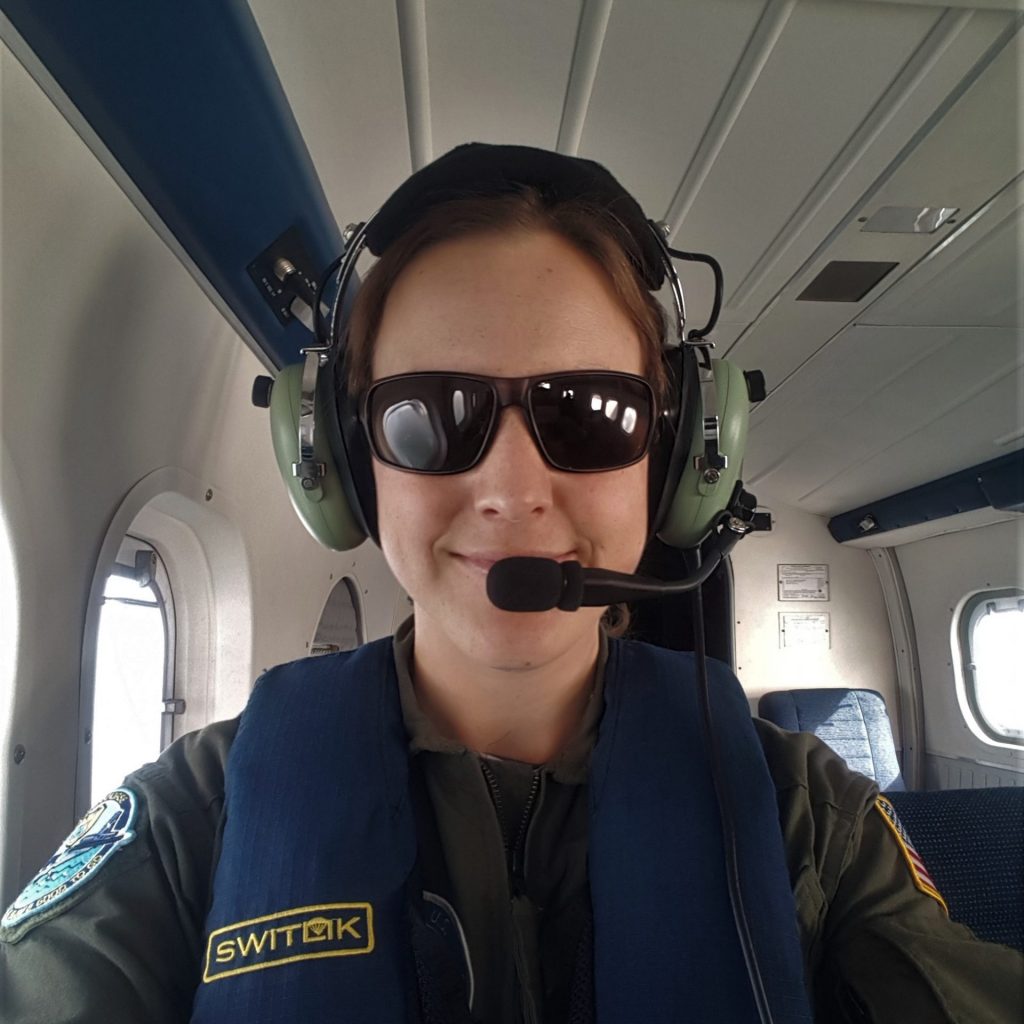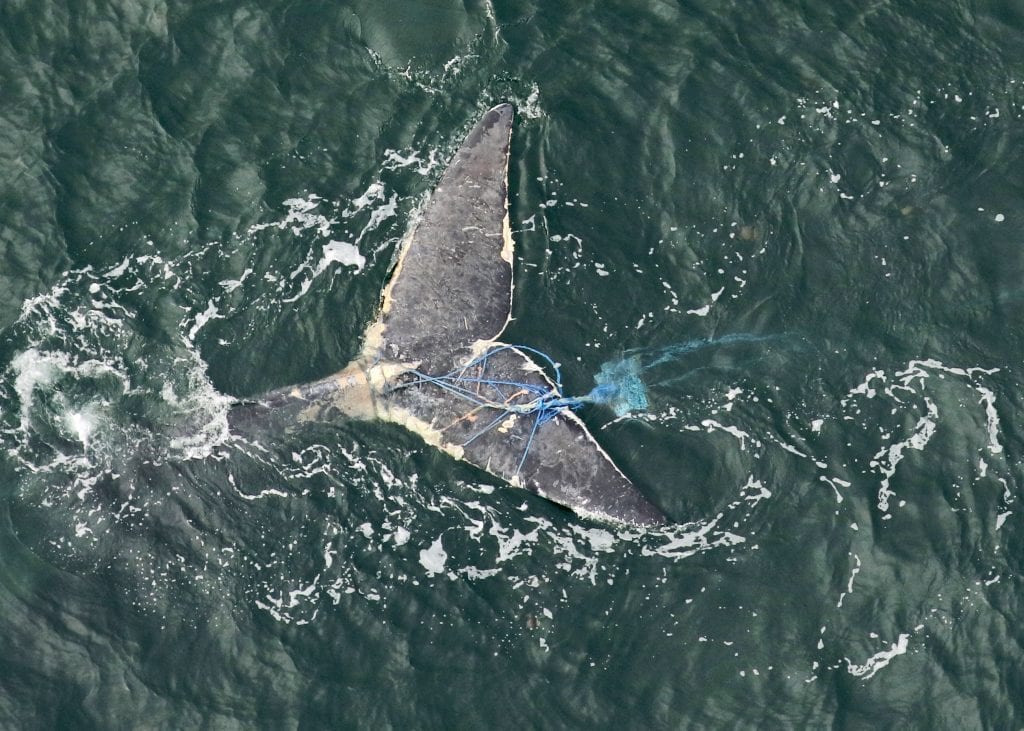
Contributor: Kate McPherson, Team Lead for CMARI’s North Carolina Aerial Team
…only one North Atlantic right whale can be killed each year as a result of human activity for the species to have a chance at survival. Over the past three years we have lost at least 32…
The CMA team thought it would be interesting to have a blog post focused on challenges as part of our aerial survey season blog series, and I can’t think of a bigger challenge than North Atlantic right whale policy. Here is the problem in a nutshell: the population of North Atlantic right whales has been declining over the past decade, largely because of entanglement in fishing gear and being struck by vessels. According to the experts, only one North Atlantic right whale can be killed each year as a result of human activity for the species to have a chance at survival. However, over the past three years we have lost not three but at least 32 North Atlantic right whales to vessel strikes and entanglement- when the total population of North Atlantic right whales is only about 360 individuals, that’s nearly 10 percent of the entire population.
Clearly, something needs to be done.

The Problem
Over the years there have been several rules and regulations put in place to give the right whale species a chance at survival, but unfortunately the changes have not been enough. Even though fisheries have used groundlines that stay at the bottom of the sea rather than in the water column where whales can get tangled up in the rope, North Atlantic right whales are still getting entangled. Even though weak links have been added to the lines that run from traps on the seafloor to buoys at the surface, North Atlantic right whales are still getting entangled (especially smaller whales who aren’t strong enough to break through those weak links). And even though there are slow zones for vessels in areas where North Atlantic right whales feed and give birth, two of the ten right whale calves born last season were struck by boats, a tragic loss that I will never forget.
The North Atlantic right whales need real change, and they need it right now.
While disentanglement efforts help the whales in need, the problem is with whales getting entangled in the first place.
We can’t rely on disentanglement teams to fix this problem. Despite the incredible and dangerous work that they do, the majority of North Atlantic right whales will become entangled at least once in their lifetime. While disentanglement efforts help the whales in need, the problem is with whales getting entangled in the first place. As our Georgia team witnessed firsthand last month, entangled right whales are very difficult to help, and can easily evade both boat and aerial observers. The best way to avoid the issue of entanglement is to have fewer ropes in the water to begin with; a transition toward ropeless fishing. These new fishing methods would also help the people who fish for a living, as they are currently prohibited from fishing in certain areas at times of the year when right whales are present. Imagine if we could create a world where fishermen don’t have to worry about losing income due to fishing closures and North Atlantic right whales could swim freely through waters once occupied by vertical fishing line. Challenging? Certainly. Worth it? Absolutely.
Our Challenge for You
This change won’t happen without a lot of hard work from a lot of different people: not just policymakers, scientists, and fishermen, but everyone who cares about healthy ocean ecosystems. So here is my challenge for you: speak up for right whales. Right now, the federal government is accepting comments on proposed changes to the Atlantic Large Whale Take Reduction Plan and your voice matters. Let regulators know that you care about the future of the North Atlantic right whale and the people who make their living from the sea.

You only have until March 1st to submit your comment. Will you rise to the challenge and speak up for right whales?
Follow along as CMARI’s right whale team fly through another calving season.
All research and photos conducted under NOAA permit number 20556-01.